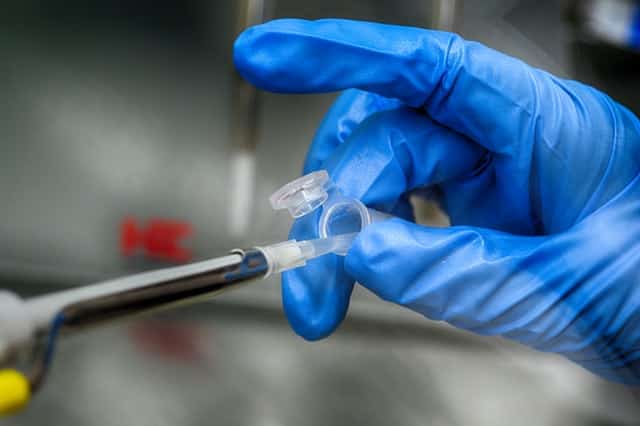Stay ahead of EU chemical compliance with F2 Labs’ REACH testing. From substance registration to SVHC screening, we support manufacturers and importers with thorough analysis, guidance on restrictions, and documentation to meet environmental and safety obligations under EU Regulation 1907/2006.
EU requirement for all products – SCIP database registration
The EU, using the REACH Regulation (EC) no. 1907/2006, requires filed report detailing SVHC substance levels above .1% (weight) in any article or part in any product placed on the market.
What does this mean for our customers?
The REACH Regulation requires that companies identify the SVHC content in every component part of products. For any part with content over .1% of any of SVHC, the company must be able to identify to customers in the EU details about the part, the SVHC, and its safe handling.
What is an SVHC?
What do I have to do about SVHC’s now?
Companies located outside the EU have no responsibility regarding REACH or SCIP. But your customers in the EU must comply and will likely be unable to do so without your help.
Until the end of 2020, there was no registration requirement unless the amount of individual SVHC met a one-ton minimum. The requirement since January 2020 has been to be able to deliver a report showing that the REACH evaluation was performed if requested. Failure to do so can result in penalties or the removal of market access.
What will I have to do about SVHCs?
All products require a REACH evaluation to determine any parts that have SVHC content. A SCIP report must be filed with ECHA for any products with any parts (anything – including screws, labels, paint) with content over .1% of an SVHC or SVHCs. This is still only the responsibility of the EU operator (usually: your customer). Your customer will not be able to do this unless you supply a complete, flat BoM with contact information for each of your suppliers.
This REACH review is tedious and very time-consuming.
How can F2 Labs help?
F2 Labs can complete the SCIP report and file it with the ECHA. We can handle this along with a RoHS evaluation and/or REACH evaluation. Both of which we presently offer to our customers.
Current customers can contact their sales representatives to discuss SCIP database registration. We can discuss the requirements as they uniquely impact your product and your business.
F2 Labs is here to help! Contact us today or call 877-405-1580 for immediate assistance.
FAQs
What does the REACH Regulation cover?
REACH governs substances, mixtures, and articles. An article is defined by its physical characteristics rather than its chemical composition.
- Example: A screw is an article.
- A solenoid valve is a complex article made of multiple articles.
- An engine is a complex article composed of other complex articles and individual
articles.
REACH applies to a list of regulated substances, including lead, Diboron trioxide, cadmium, and
melamine (full list here).
What are the reporting requirements under REACH?
Before January 5, 2021, companies had to report if they sent more than 1 ton per year of a Substance of Very High Concern (SVHC) at a concentration of 0.1% or higher (homogeneous level) to the EU.
However, the Waste Framework Directive (WFD) removed the 1-ton threshold, meaning that since January 5, 2021, any amount of an SVHC above 0.1% must be reported to the SCIP database, with no exemptions.
Who is responsible for submitting SCIP reports?
The importer (buyer) in the EU is responsible for the SCIP database submission, not the manufacturer.
If your company does not have an EU location, you cannot submit SCIP reports directly. Instead, you must provide the importer with:
- An I6Z data file for submission, OR
- A Bill of Materials (BoM), part counts, and supplier contact details to enable them to complete the report.
Why is the Waste Framework Directive important for REACH compliance?
The WFD extends REACH by requiring detailed tracking of substances in products. It uses this data for regulatory reporting to ECHA (European Chemicals Agency), ensuring greater transparency in material composition for environmental and waste management purposes.
Where can I learn more about REACH and the Waste Framework Directive?
Does REACH apply to my product?
REACH is for everything you put on EU soil, has nothing to do with CE, and is not applicable to the UK. The rules apply differently to substances, mixtures, and articles. Your equipment is a complex article (an article made of lot of other articles). An article is anything that is made with a special shape, surface, or design into something that is more defined by those attributes than by chemical composition. In other words – a piece of copper wire is an article. A piece of plastic insulation is an article. An electric cable made of copper wire and insulating wrap is a complex article.
Everything is in scope of REACH – but it applies differently to powders/mixes/chemicals (substances and mixtures) than it does to a machine (a complex article).
